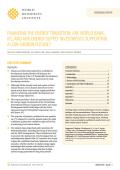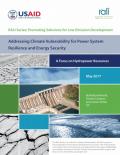
Finance provided and catalysed by multilateral development banks (MDBs) will help pay for implementation of the UN Sustainable Development Goals and the Paris Climate Agreement in many developing countries. Although MDBs already track and report on their climate finance, less is known about how investments across their entire energy supply portfolios relate to achieving sustainable development and climate-change objectives.


The importance and value of 2050 strategies that seek to cut greenhouse gas emissions while also ensuring well-being and prosperity have been acknowledged by policy makers, advocates, and businesses for many years. However, there is no formal multi-lateral or international guidance as to what such strategies should contain or how they should be developed. While this is an important deficit that should be corrected, it is somewhat mitigated by a strong body of independent papers.
This paper aims to be a starting point for policy makers who are seeking to either develop their country’s first 2050 decarbonisation plan, or to strengthen their existing plan. The literature reviewed for these guidelines ranges from legislative texts and governmental agency reports to the outputs of independent research projects. While national circumstances will require some differences between countries’ 2050 strategies, the consistency with which the various papers identify the essential building blocks of a strong 2050 strategy should be noted.

This paper aims to inform energy planners and investors about i) how climate change can affect power generation resources, particularly hydropower resources; and ii) an approach that can be taken to address climate change risks, both at the project and sector level, to improve power system resilience and enhance energy security.

